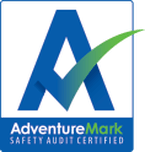Observations from the field
This Article was published by Support Adventure in 2016. Many of the issues are still being observed in the field on audit.
What the Auditor Saw
Another year, another round of adventure activity safety audits. Or, at least, surveillance audits, to use that creepy auditing term. What did I see? Although operators have improved their safety planning considerably, I often saw review weaknesses – staff monitoring, incident trends, and safety management plan reviews – and some grumpiness too.
Grumpiness
There’s some grumpiness around time and cost, and that’s understandable. However, I did find the grumpiest operators viewing their audit as a compliance exercise rather than a value-added exercise – ‘clipping the ticket’, not an external review of their practices. They were especially grumpy when they had voluntarily worked hard to gain qualifications and received little recognition for their efforts from the audit process. They wanted the focus on leader skills, not on system auditing. They’re right in believing that the leader competence signaled by their qualifications is a key to safety, and I encourage leaders to gain qualifications. It’s a clearer path to determining competence than an internal process, which was often hazy. However, it’s not the whole package. The big picture requires more than competent leaders as the safety audit standard spells out. It requires operators to plan for matters such as hazard ID and management (including drugs and alcohol), staff induction and ongoing training, internal communication, risk disclosure, leadership support, legislation compliance, emergencies, and continual improvement. Operators who had attended workshops tended to understand this better.
Staff monitoring
I often saw good induction and training procedures but poor monitoring records. New staff were deemed competent and then assumed to be working to the plan. The best plan on the planet is no use if staff don’t work to it, and often managers just assumed they did. Accident investigations sometimes found otherwise, but that’s a little late. Monitoring isn’t an easy matter for operators whose staff work alone. Sometimes client feedback was cited as evidence, but if clients know enough about safety to usefully comment, maybe they wouldn’t be clients. The cost of observing a leader in the field is real, especially for small businesses, but what is more important than assurance that your plan is live, well, and driving safety? Sometimes peer review works for operators, and that’s acceptable. Assuming it’s formalised and recorded that is, maybe a standard one-pager that focuses on whether each staff member is working to the standard operating procedures.
Incident reviews
The safety audit standard requires operators to review a group of incidents, usually a season or a year’s worth. The idea is that a trend might emerge that wasn’t apparent when incidents were reviewed individually. This was generally well understood but not always well documented. Individually, incidents were usually well recorded and well analysed, although it was often far from clear whether that work resulted in change to the operating procedures. Better records of that process – record, analyse, change – is the next step. Analysing a block of incidents was not so well done. Sometimes I saw collated incidents only – no apparent analysis, no apparent change to procedures. The hard work had been done but the key learnings were not taken, or at least it wasn’t clear that they had. Not that the hard work always included recording and analysing near misses as well as accidents. Recording these free lessons is slowly becoming part of the sector’s culture, but nowhere as frequently as studies indicate they should be. If the operator’s safety culture doesn’t encourage recording near misses, the trend analysis will be short of data. The alternative is to wait for the accident….
Safety management plan reviews
Good plans need regular reviews, ideally involving staff, and certainly taking into account incidents and complaints, and relating performance to objectives. I saw a sector getting better at reviewing, but not always getting better at recording the process and updating plans, including their document control section. It is a requirement of the safety audit standard but the quality of safety management plan reviews remains variable. Conclusion Operators’ safety planning has improved. Numerous workshops, guidance from WorkSafe, and the SupportAdventure website have all played a part, not to mention the sanctions inherent in the regulations. The sector has come a long way in a short time but monitoring and continual improvement is a work in progress for some operators. They are key parts of the big challenge – building a positive safety culture.
Stu Allan coordinates the AdventureMark audit programme. He was a Tourism Industry Aotearoa Project Leader, an NZOIA Board member, and has worked as the Principal Advisor, Adventure Activities, to WorkSafe NZ.

